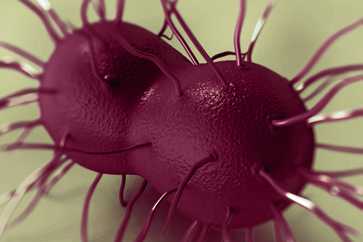

Fact Sheet
Sexually active women younger than 25 years or women with new or multiple sex partners, or a sex partner who has an STD should be tested every year.

Antibiotic Resistance
Gonorrhea has progressively developed resistance to the antibiotic drugs prescribed for treatment.
Highlights
General Information
The State of STDs in the United States: This *customizable* infographic highlights statistics for chlamydia, gonorrhea, and syphilis, as well as the populations most affected by these STDs, consequences when left untreated, and ways to prevent them. (September 26, 2017)
2015 STD Treatment Guidelines – Gonococcal Infections – Includes alternative treatment regimens and updated testing recommendations for gonococcal infections, as well as diagnosis, prevention, and special considerations. (June 4, 2015)
STD Surveillance Case Definitions – Includes updated definitions for Gonorrhea and Syphilis effective January 1, 2014 (December 10, 2013)
Changes to Gonorrhea and Syphilis Case Definitions: Program Impact) (January 16, 2014)
Lab Information
De-Duplication Guidance for Gonorrhea and Chlamydia Laboratory Reports – This document contains background and guidance on the timeframe that jurisdictions should use to de-duplicate their gonorrhea and chlamydia laboratory reports before reporting these cases to CDC.(June 17, 3016)
Recommendations for the Laboratory-Based Detection of Chlamydia trachomatis and Neisseria gonorrhoeae — 2014 (March 14, 2014)
Antibiotic Resistance
Gonococcal Isolate Surveillance Project (GISP) Profiles 2015
AR Investment Map This interactive tool shows CDC’s key investments to combat antibiotic resistance (AR), including resistant gonorrhea, across the nation.
Neisseria gonorrhoeae Antimicrobial Susceptibility Surveillance – The Gonococcal Isolate Surveillance Project, 27 Sites, United States, 2014 MMWR July 14, 2016
Antimicrobial-Resistant Gonorrhea Infographics (July 14, 2016)
- Page last reviewed: September 28, 2017
- Page last updated: October 6, 2017
- Content source:


 ShareCompartir
ShareCompartir
